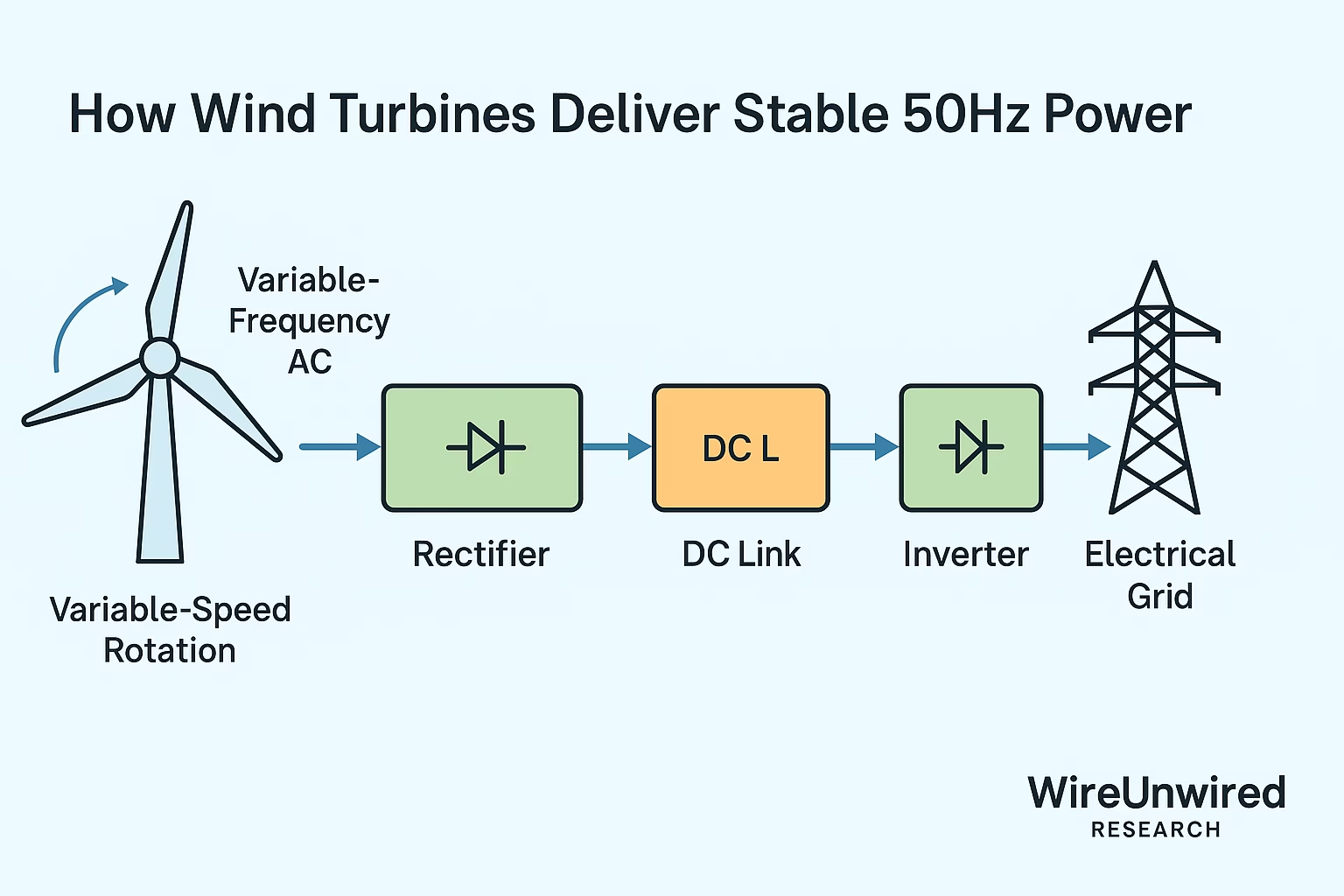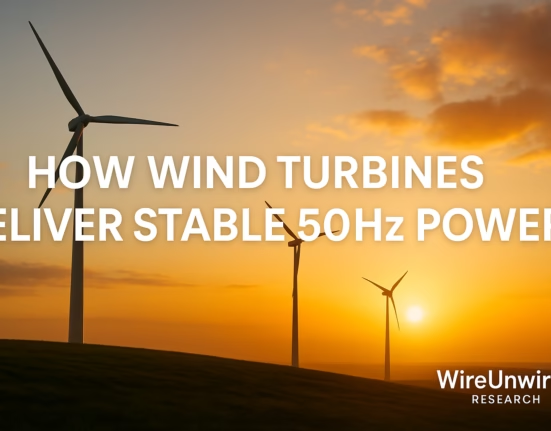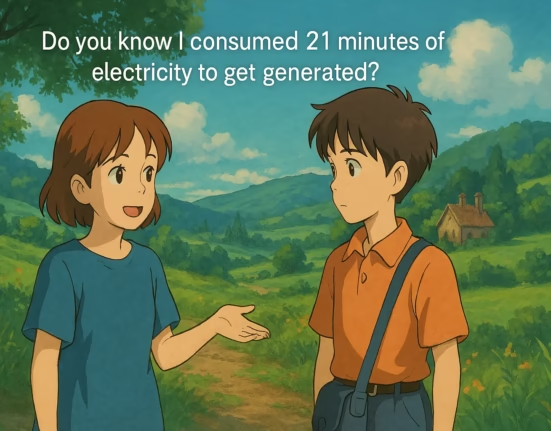How Wind Turbines Deliver Stable 50Hz Power at variable Wind Speed?
- by WireUnwired Editorial Team
- 21 June 2025
- 8 minutes read

In a thermal power plant, the turbine spins at a constant speed i.e 3000 RPM(Rotations Per Minute), the generator follows, and the electricity comes out neatly at 50 Hz.
Easy. But wind turbines? They spin at whatever speed the wind feels like. Sometimes fast, sometimes slow, and sometimes not at all.
Yet somehow, these machines manage to keep delivering clean, grid-compatible 50 Hz power. Ever wondered how that’s possible?
Let’s peel back the blades and take a look.
TRENDING
Variable Wind Speed Means Variable Generator Speed
Here’s the root of the challenge: wind turbines operate at variable speeds to extract the most energy from changing wind conditions. And since the frequency of AC power generated is directly related to the speed of the generator, that means…
💡 The raw power output from a wind turbine is at a variable frequency, not 50 Hz.
That’s obviously a problem if you’re trying to connect it to a national grid that strictly runs at 50 Hz (India, Europe) or 60 Hz (US).
So what’s the trick?
How Wind Turbines Deliver stable 50 Hz/60 Hz? : The Magic of Power Electronics

To deal with the inconsistent frequency, wind turbines use a clever three-step power conversion:
✅ 1. AC (from generator) → DC
The turbine’s variable-frequency AC is first converted into DC using a rectifier.
✅ 2. DC Buffer
The DC is smoothed out using a DC link capacitor — think of this as a holding tank that evens out the flow.
✅ 3. DC → AC (at 50 Hz)
Finally, the DC is converted back to AC at exactly 50 Hz using an inverter — a fast-switching device that rebuilds the waveform using PWM (Pulse Width Modulation) techniques.
And just like that, wind power becomes grid-ready.
What Kind of A.C Generator do We Use in Wind Turbines?
Two main types dominate the wind power scene:
| Generator Type | How It Works | Common In |
|---|---|---|
| PMSG (Permanent Magnet Synchronous Generator) | Fully decoupled — all power goes through AC–DC–AC converter | Most modern turbines |
| DFIG (Doubly Fed Induction Generator) | Partially decoupled — only rotor side is converter-fed | Older or mid-range turbines |
Either way, the goal is the same: take whatever frequency the wind gives, and transform it into stable, synchronized 50 Hz AC power.
But Wait — Don’t Rectifiers Use Thyristors?
Good catch. Traditional rectifiers do use thyristors (SCRs), which need gate pulses at specific points on the AC waveform. The issue?
- Thyristors depend on fixed input frequency for accurate pulse timing.
- Wind turbines produce variable-frequency AC — making this method unreliable.
So what’s the workaround?
IGBTs to the Rescue
Modern wind turbines use IGBT-based (Insulated Gate Bipolar Transistor) active rectifiers instead of thyristors.
Why?
- They’re fully controllable.
- They don’t rely on zero-crossings — they switch on demand.
- Using PWM control, they can handle any input frequency, no matter how unpredictable the wind gets.
This makes them perfect for the job.
🧠 The Brains Behind the Wind Energy
All of this conversion and control would be impossible without some serious onboard intelligence. Enter:
- DSPs (Digital Signal Processors) or microcontrollers
- Real-time voltage/frequency sensors
- Sophisticated control algorithms that:
- Monitor turbine output
- Generate high-speed PWM signals
- Synchronize output to the grid (voltage, phase, and frequency)
All of this happens in milliseconds, adjusting on the fly as wind speeds change.
🧾 Quick Recap
| Stage | What Happens | Tech Used |
|---|---|---|
| AC to DC | Variable-frequency AC converted to DC | IGBT-based rectifier |
| DC Link | DC stabilized | Capacitor bank |
| DC to AC | Clean 50 Hz AC generated | PWM inverter |
| Control | Everything coordinated in real-time | DSP / microcontroller |
🔌 Final Thoughts
The beauty of modern wind turbines lies in their ability to take something inherently unstable — the wind — and turn it into perfectly synchronized, stable power. Thanks to IGBTs, smart converters, and real-time digital control, variable-speed wind turbines can stand shoulder to shoulder with the most stable synchronous generators in thermal plants.
Wind may be unpredictable, but the power it delivers doesn’t have to be.
Discover more from WireUnwired Research
Subscribe to get the latest posts sent to your email.








